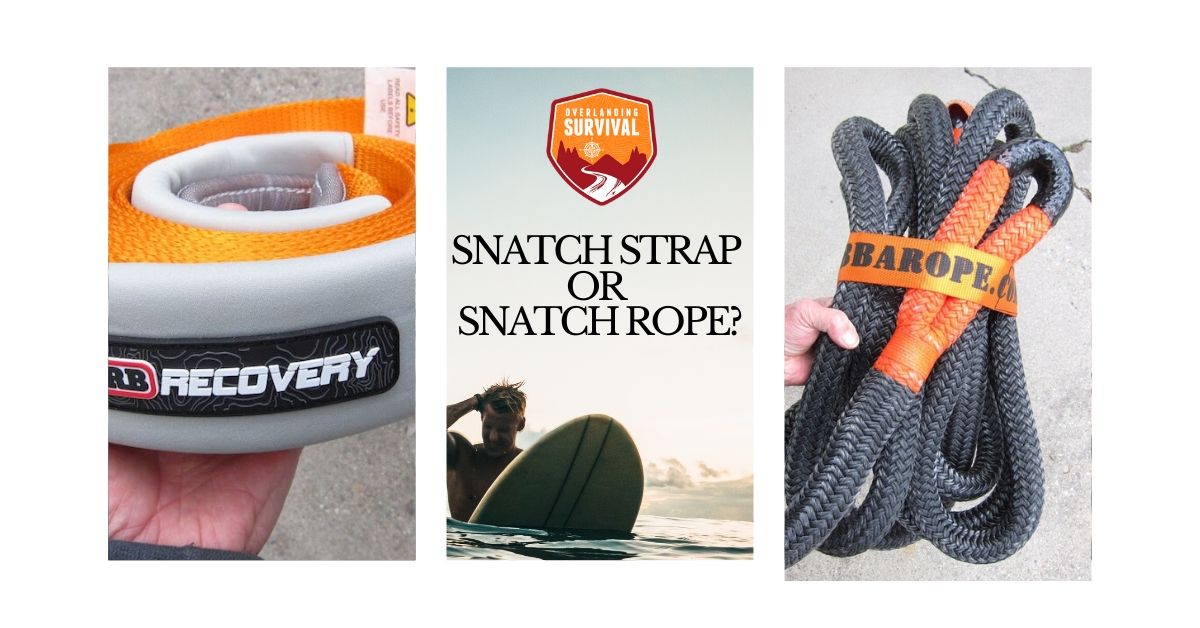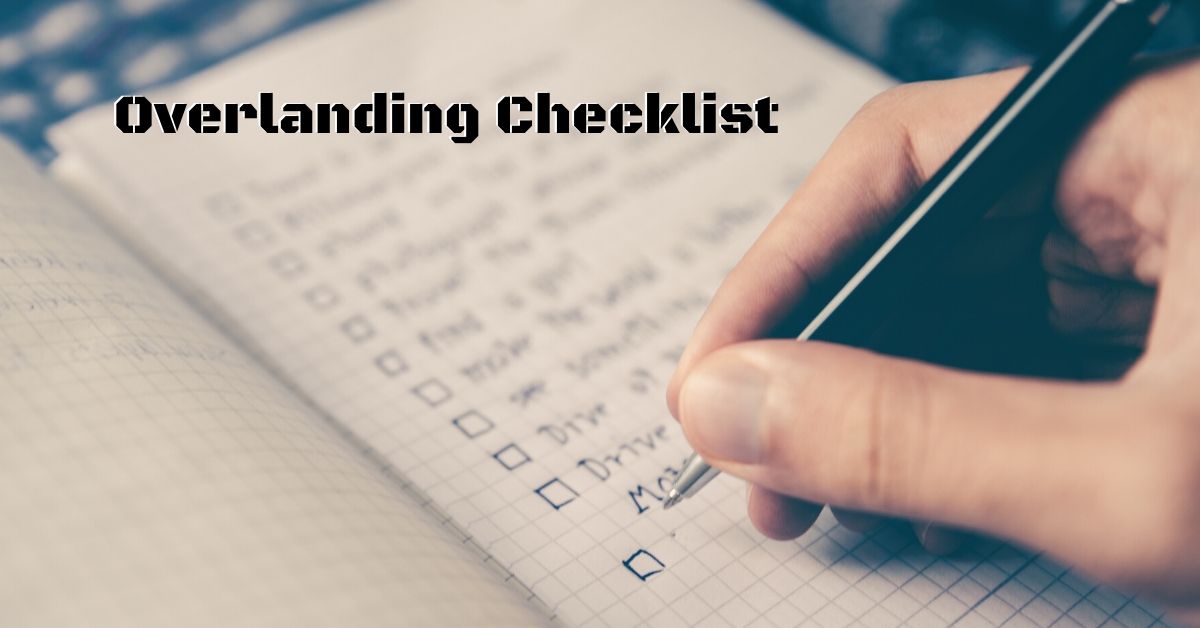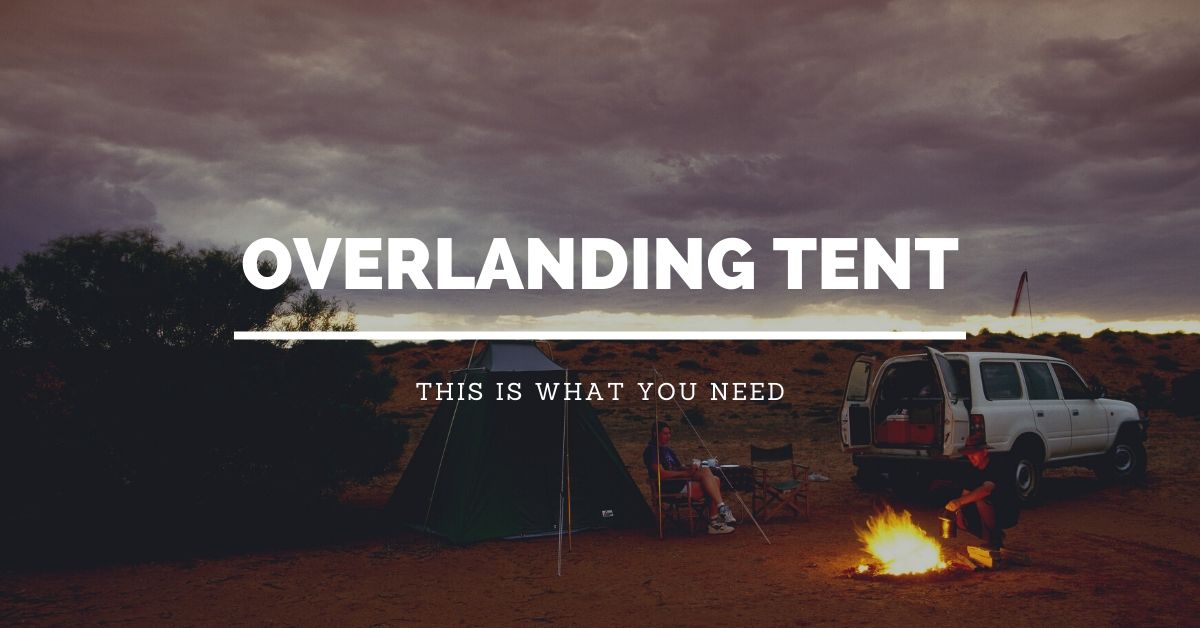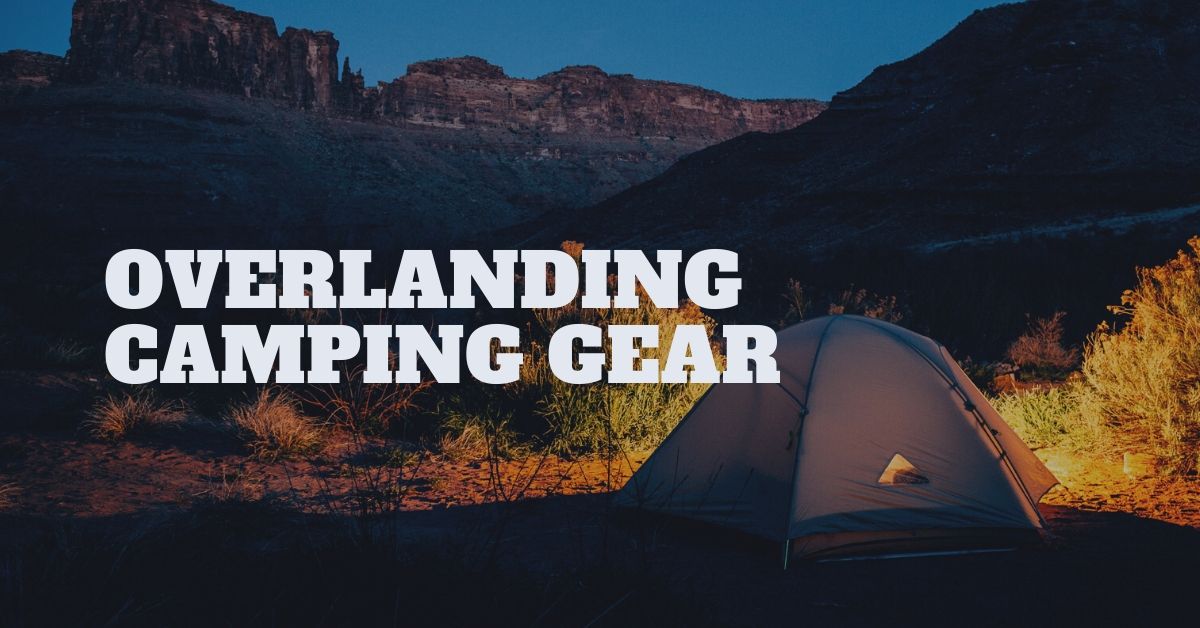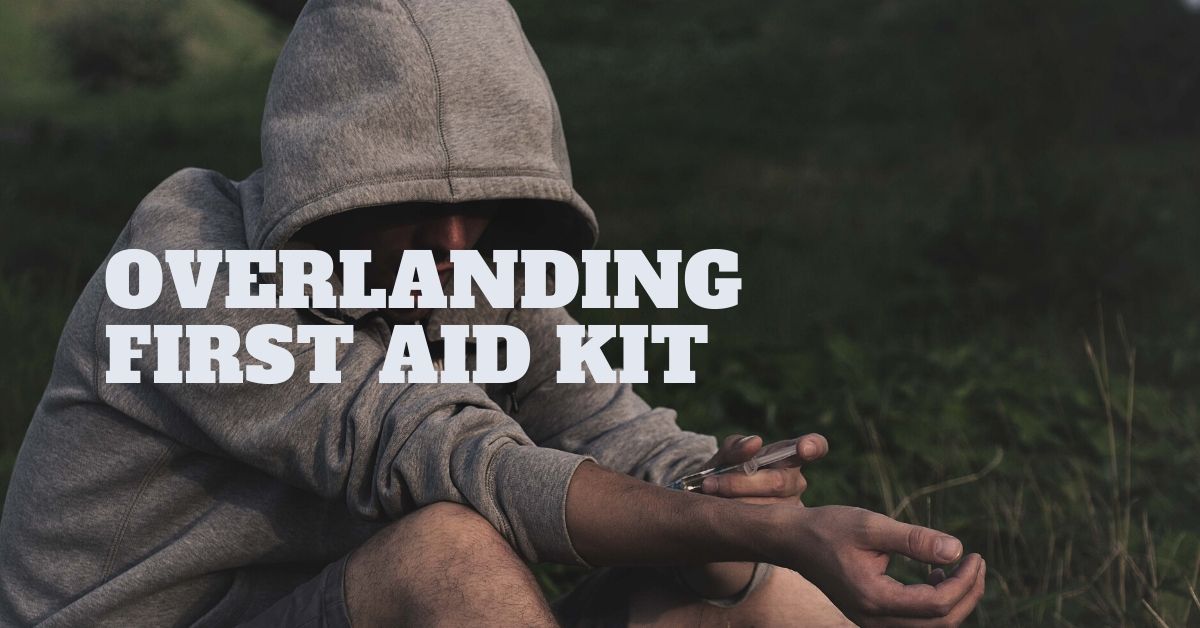The Basics of Overlanding recovery straps and ropes: What to look for and why!
Having a snatch strap is a no-brainer for any overlanding adventure. A snatch strap looks much like a traditional tow strap except it stretches allowing the pulling vehicle to get a run at it before the line goes taught. Without that elasticity, the shock to both vehicles and the recovery gear between them is violent and potentially hazardous. A snatch strap also builds up that additional rolling energy into a graduated release that both pulls much harder and might not even spill the driver’s coffee.
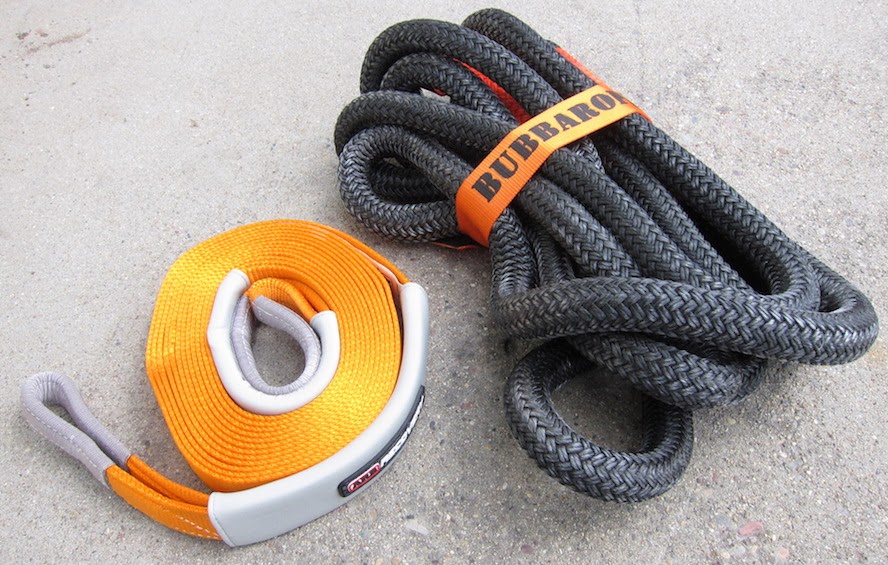
ARB makes a fine snatch strap. It comes in different lengths, ratings, and colors. For overlanding I recommend a 30 foot snatch strap. If you need less than that, there are many solutions. It is much more common to need a longer strap, and in general it is perfectly fine to connect straps. Multiple snatch straps amplifies the benefit up to a point, and inserting a regular tow strap in the mix adds no additional issues since the stretch of the snatch strap is still in play.
So the big question is: Do I need a snatch strap or a snatch rope?
Let’s start with the main differences between straps and ropes. First of all, the strap is a two or three inch wide flat strap while the rope is about an inch in diameter and round. The rope tends to be larger overall and heavier. And more expensive. So what’s the benefit of a snatch rope if it’s the same length and does the same thing? Well, a rope actually does it better in a couple ways. First, the ropes usually have a stretch factor (elongation under load) of 30% meaning they gain almost a third more length when snatching. That produces a much softer pull and allows a longer and faster run for the pulling vehicle. Most snatch straps only have a 20% stretch. While 10% may not seem like much, it is noticeable. And compare that to the roughly two percent a tow strap stretches.
Regarding that stretch, the physics of the stress on the snatch strap make for a shorter life. The strap won’t really weaken, but it won’t stretch as much meaning it’s turning into a tow strap. Ropes can take considerably more cycles (stretch, release) than a strap. And some straps are only rated to 10 cycles before they should not be considered effective snatchers. That’s 10 pulls, and it’s not uncommon to do more than one pull per recovery. Think yank, yank, yank pop free. That’s three of your 10 cycles. Of course a small car or easy recovery might not really count as a full yank or cycle, but the straps do lose their efficacy rapidly compared to a rope. A further consideration is that a wet strap or rope does not have its full stretch either, so a well-used wet snatch strap might barely be able to snatch.
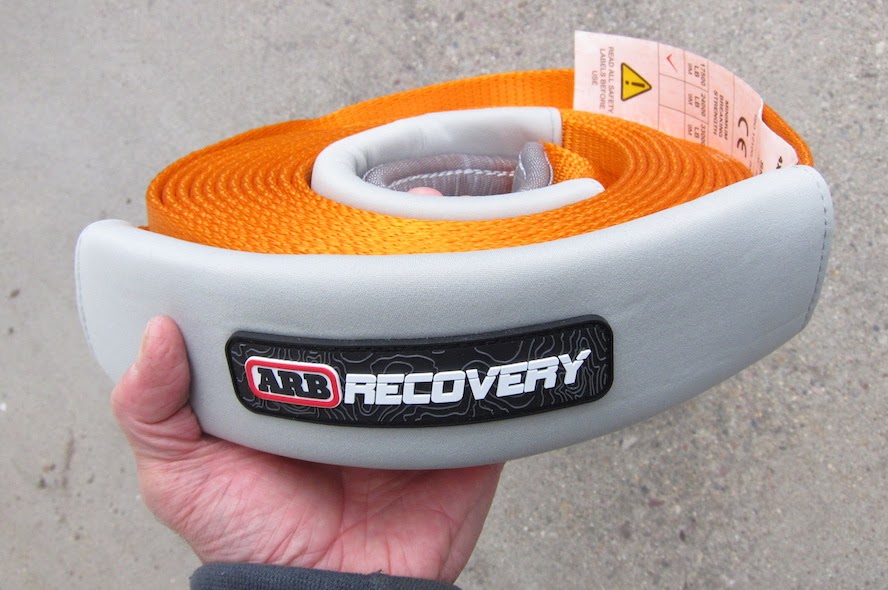
Snatching straps and ropes have a working load limit. This is important to note because the dynamics of snatching requires a balance between vehicle mass and elongation. If the stuck vehicle is too heavy for the strap, the snatching line will go taught before transferring all the force making it a harsh tow strap like experience. And if the strap is way overrated for the snatch, then it won’t stretch much, again making a harsh pop when the line goes tight. Generally, you want a snatch strap with a working load of about two or three times the weight of the lightest vehicle (remember Newton’s Third Law). But most overlanders use a higher rating than necessary.
Regarding overall size, the strap rolls up tightly and can easily be stored almost anywhere. The rope on the other hand is always going to be the size of a small backpack, and most ropes do come in a carry bag. Ropes are heavier, and can really collect mud. But their performance wet and dirty is better than a strap so most professional recovery companies use them along with event hosts that know they will be recovering a lot of vehicles.
Popular snatch ropes are the famous Bubba Rope, and Yankum Ropes. Both are excellent and quite similar. Snatch ropes sell between two and four times as much as a comparably rated snatch strap. And while you might think your F250 Super Duty is a big vehicle in need of big recovery gear, know that snatch rope companies make products for pulling loaded semis, bulldozers, and tanks. Your F250’s not so big anymore is it? But of course a tank snatch strap might fill your pickup bed.
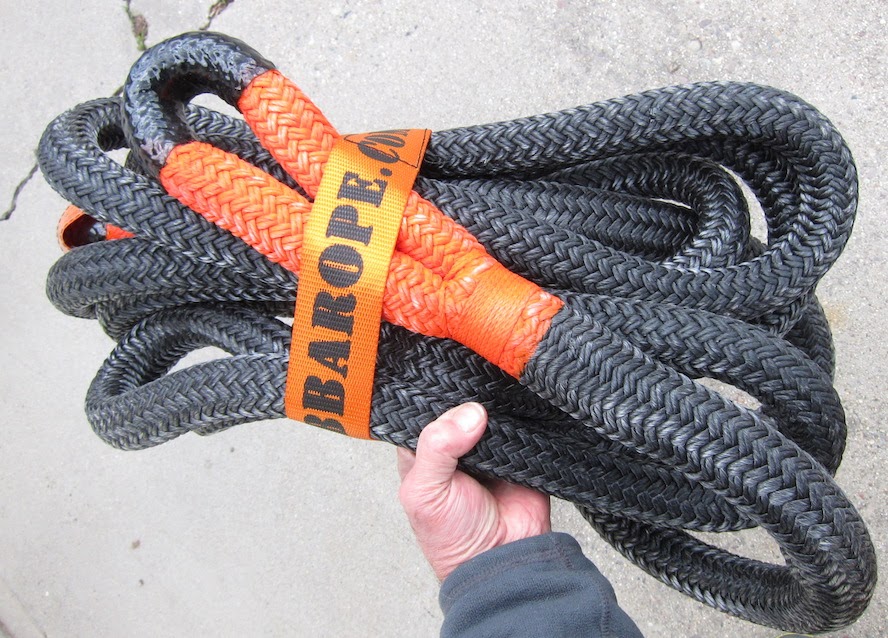
I have both a 30 foot ARB snatch strap and a 30 foot Bubba Rope. I carry the strap all the time, and carry the rope as well when there is a reasonable chance I will need to do some snatching whether on my rig or someone else’s. If you are just interested in filling out your overland recovery gear kit, then start with the ARB strap. It’s quality will teach you plenty about what your future needs will be. If you are going to push the limits of your vehicle or venture with less abandon than most, then the rope is a great option. Either way, you really need to have one when you overland. And don’t forget the shackles. Snatch straps and ropes never have hooks sewn in. Only a loop at each end.
A word of warning here. Snatch straps and ropes are like giant rubber bands but much more dangerous. Extreme caution is needed when using them. While failure of a quality overlanding product is rare, it must be accounted for. So basic recovery safety considerations are required. And never use a trailer hitch ball as a recovery point. Doing so just loads ammunition into your snatch strap sling shot!
